Prey is not a 2017 game developed by Arkane Studios and published by Bethesda Softworks. That game is falsely named (and reviewed here), and has nothing in common with Prey, which is a 2006 game developed by Human Head Studios and published by 2K Games. Prey has ironically become prey to a mainstream game publishing studio, Bethesda Softworks, who prefers to expunge certain older games from history; more specifically, they released a game with the same name in 2017 and no longer allow the original to be sold. Likewise, they do not sell Wolfenstein (2009) and there appear to be no legal reasons behind this.
Similar to how Star Wars: Battlefront is not a 2015 game by DICE, rather it is a 2004 game by Pandemic Studios, and Star Wars: Battlefront II is a 2005 game by Pandemic Studios rather than a 2017 game by DICE. Thankfully the original Battlefront II can at least still be legally purchased from a storefront. Although the original Battlefronts are outright superior to the modern day ones, the two Preys could hardly be more different as far as two FPS games go. In this article, we will be looking back at the first and the real Prey game from 2006.
Prey is a Sci-Fi FPS built on id Tech 4, the same engine that powered Doom 3. Like Doom 3, it is technologically remarkable, even by modern day standards but it was also the best looking game at the time of its release in 2006. As with every other id Tech 4 game, it does need configuration file tweaks before it can support modern resolutions (refer to this website), and like many other id Tech 4 games it has a fixed FPS cap at 60. This frame rate cap can be removed, but doing so will speed up all other elements of the game. I played it at 100 FPS which is not too fast to break gameplay, although it does break dialogue audio so it was sometimes necessary to re-enable the FPS cap for dialogue sequences. Other than this, I had minimal issues running the game on my modern system, including no issues running it at 3440 x 1440. Prey is yet another id Tech 4 game with no anti-aliasing compatibility bits but it does at least have built-in MSAA. This leaves alpha textures unaffected and obviously aliased even at 3440 x 1440, but it is tolerable.
It will be a long time before we see another game like Prey, and if we do see such a game it’ll most likely be an indie game or just a smaller game published by someone like Devolver Digital who actually allows their developers to exercise creativity unlike AAA game publishers. It is a weird game, weird and funny, and those two things usually are not allowed (especially the former). No cinematic nonsense in this FPS, it is first-person the entire way and the player rarely loses control of his character. It is unconventional and in this case it leads to additional challenge, and challenge is something most AAA games try to avoid (especially FPS games). Prey opens with a memorable and rather amusing alien abduction sequence, and the rest of the game takes place on this alien vessel. You play as Tommy, a Native American and former US soldier who doesn’t care much for his Cherokee heritage at the start. But the alien threat causes Tommy to embrace his heritage and gain weird spirit powers, making you immortal throughout most of the game. For most of the game, your only goal is to rescue your girlfriend from the aliens, but at the end it shifts to destroying the aliens altogether, with the help of other survivors you meet. There is not much story material here, but it works and the humor adds to the storytelling as do some of the creepier sections.
Gameplay
Prey is a fast paced FPS where you move through oddly yet cleverly designed levels, each one posing unique challenges, engaging in memorable shootouts with AI that far surpasses AI in modern action games (this level of AI would not be allowed in most AAA games today, as it would be deemed too difficult). You will defy gravity, walk on walls and ceilings, travel through bizarre portals, pilot bizarre vehicles, interact with alien technology that is actually alien and not immediately recognizable (this is one of only two video games I know that actually pull this off, the other being Obduction), solve weird practical puzzles, and much more.
So, like I said, a weird game, but in the best possible way. Truly a one of a kind FPS.
Prey is a “classic” PC FPS game, vaguely similar to classic 1990s shooters in that it uses a linear design and provides no objective markers or marked quests, since there is only one way to go (forward). But the way forward won’t always be clear to people, due to obstacles in your way (practical “puzzles”) or confusing alien level design, particularly the more vertical levels. Modern day pampered gamers will get “stuck” in this game due to being unsure of where to go, although the “puzzles” are extremely simple, even simpler than those in the Half-Life games.
The game gets off to a fast start. One of the only things it has in common with the 2017 game is that you start with only a wrench as your weapon (which ironically applies to System Shock 2 as well, the game 2017’s Prey is really a successor to). That’s about it, they are two completely different types of FPS. Once abducted, you break free from your chains and the game essentially becomes a free for all. New weapons are distributed throughout the game; there are 8 weapons in total, but each one is completely unique with no fewer than two functionalities for 6 of them. One of these guns ranks very highly on our list of the top 50 most awesome guns in video game history.
While the quality of the arsenal is great, weapon progression is too slow. You’ll be stuck with just a handful of guns for a long time before unlocking the last ones in relatively rapid succession.
The levels are not long, yet Prey doesn’t only rely only autosaves nor checkpoints. It keeps up to 5 quicksaves and you can make as many manual saves as your heart desires. It also creates a new autosave on every level. In total, the game is approximately 8 hours long. Short and sweet, although despite its length it could have used more variety in several areas, as detailed below.
The game is filled with memorable moments of comedy and terror, such as the place showcased in the screenshot above where you witness the remainders of children that were at the mercy of the aliens. Prey’s humor is derived from some of Tommy’s reactions to certain things in the environment (not all of them are comedic, but the ones that are typically read your mind and gain humor from that) or radio broadcastings from Earth about strange lights and the supposed alien abduction, since the aliens do not attack or abduct all of Earth’s population.
On that note, Prey’s enemy design is more varied and distinct than that of most modern day FPS games, but a lot less varied than the classic 90s PC shooters. The game needs more enemy variety certainly; shooters like this usually aren’t complete without humanoid enemies, large tanky enemies, fast crawling or slithering enemies (ideally ones that can traverse walls/ceilings and/or swim), and flying enemies, but Prey is lacking most of those besides humanoids and crawling enemies.
The aliens as a whole (their objectives) most strongly resemble War of the Worlds, but the levels you see from within the space ship are like nothing else. You will see infrastructure on many of the earlier levels that reveal the true nature of the aliens’ goal, showcasing attention to detail in art design. The “Core” level in Crysis takes some inspiration from Prey.
In science fiction, encounters with aliens should generally be unique rather than familiar. In Mass Effect (especially Mass Effect: Andromeda which is set in another galaxy entirely) things are all too familiar, especially alien technology. In Andromeda I recall one human in your squad being completely bewildered by what is clearly a power generator, alien in design but just like a human one. He’s not portrayed as a fool; the player is supposed to share his confusion, except the damn thing is clearly a power generator from modern times. None of that nonsense in Prey, alien technology is truly alien throughout the game. No shooter does a better job at this than Prey.
And I just love how the player is forced to learn how to use/interact with this alien technology by trial and error, and often times this trial and error will harm you or even kill you if you’re not careful (though to be killed by it requires illogical action from the player). Unforgiving and no hand holding, just how I like games to be designed. Anything else would not be entertaining.
Prey is a true 3D experience. Or 4D. Most other FPS games are two dimensional in comparison. I’ve never played a shooter that has such vertical gameplay… vertical and upside down, and sideways, and spatial anomalies and paradoxes. You will encounter all of these, and not all of them are primary showcases or obstacles. Some are just there to complete the weirdness of the level design. An alien world that is truly alien. Way too confusing for modern day mainstream publishers who would tell Human Head Studios to dumb down the game and provide objective markers and clear cut instructions so that the player can never be confused. You just got abducted onto an alien spaceship out of nowhere, confusion is a necessary part of the design. Just when you think you’ve gotten used to it, Prey throws another curve ball at you, introducing new alien technology and a new way to interact with the game world, introducing another dimension to the gameplay.
Unfortunately, while Prey is able to diversify its “puzzle” gameplay well, it doesn’t do the same for the FPS gameplay, due to the aforementioned lack of enemy variety combined with the weapon progression that is too slow, and while the level design is awesomely creative, from a shooting encounter standpoint they start to become a bit stagnant by the half point of the game.
Environmental interaction is incredible in Prey. Everything not bolted down is a physics object, it has quality ragdolls, it has various special objects you can interact with including several card game machines, and the design of this alien spaceship makes avid use of id Tech 4 physics in very unique, alien ways. And the portals you see in these screenshots, picture-in-picture graphics that weren’t demanding on 2006 hardware. Prey was a technological breakthrough and is still more technologically impressive than most modern day AAA action games in the ways that matter most, such as physics and AI, although the AI does leave a bit to be desired.
As with any excellent linear action game, every level poses unique challenges in Prey, due to the different ways it uses its alien technology on each level, both for problem solving and for shootouts. Prey is not afraid to throw the player into unique, well designed ambushes in which your chances of survival on a first-time playthrough are very, very low. This is yet another aspect of Prey that a modern day mainstream publisher like Bethesda, EA, Ubisoft, Square Enix, Capcom, Sony would not allow, even though you’re immortal in the game.
Once you’re immortal, when you “die” you wake up in the spirit realm and have a few seconds to gather back spirit energy and health by shooting creatures that fly around you, although some of them also attack you and drain your spirit energy and health again. You then respawn either exactly where you died or, if you died in a vehicle or died by falling out of bounds, you’ll respawn at a nearby location, only with as much spirit energy and health that you’ve accumulated.
Speaking of dying, expect it to happen quite a bit on normal mode. The game only offers easy and normal mode to first time players, beating it on normal unlocks Cherokee (hard mode). On normal mode, enemy AI can kill you with one grenade or one headshot, you are not a tank in this game and must be cautious and clever.
As mentioned previously, the guns in this game are all distinct from one another. Most have an… organic appearance, as if they are living creatures. The first gun you get is essentially a designated marksman rifle, with its primary fire being fully automatic fire like any battle rifle (prone to overheating), and secondary fire being a zoomed single more powerful shot using its infrared scope. Secondary fire uses up more ammo, and ammo for this gun automatically replenishes somewhat once fully depleted, so you can never be totally out of ammo in Prey (though no other gun replenishes). A contemporary design just with different looks, which also applies to its grenades (you throw some kind of creature that detonates in a deadly green explosion seconds later) and to some extent its ‘shotgun’ which fires green goo primarily and has a grenade launcher like secondary fire (though rather than a grenade, it seems to fire a significantly more powerful glob of goo that requires reloading after each shot).
The Leech Gun is the one that ranked highly on our list of most awesome guns; you can fill it with one type of energy out of 4 available in the game. This energy can be found throughout the levels, and secondary fire absorbs this energy. The red energy fires plasma in a fully automatic firing pattern, another contemporary design. It can also absorb cold energy, which makes it shoot a continuous spray of frost that freezes enemies. Then there is electricity, which when absorbed into the gun causes it to perform just like Unreal Tournament’s Lightning Gun (it fires a devastating lightning blast in a slow, semi automatic high recoil firing mode). Last but not least is sun energy, which fires a continuous beam of… sun energy that is incredibly powerful.
There is also one light machine gun like weapon that has a secondary grenade launcher (this gun is also prone to overheating), and a rocket launcher for which the secondary fire puts up a temporary shield in front of you that stops all explosive projectiles coming your way. Ultimately a very cool selection of guns that covers most bases. None of the guns become obsolete as you play, all have their uses. The last weapon is the spirit bow, usable when you enter the spirit world which leaves your body vulnerable but allows you to pass through dangers that’d kill your physical body or travel over roads not previously accessible. This bow functions like a typical bow, with unlimited ‘arrows’ and high damage output. Enemies can see you once you’ve attacked them in spirit form. Each ‘arrow’ fired drains your spirit energy, but enemies drop spirit energy if killed by normal means. Health is manually replenished at certain… healing pods I’ll say, positioned throughout the game. The most common type of healing pod heals only slightly (maybe 1/5 of your total HP before you upgrade your HP near the end of the game), the other heals around 3/4 and looks more like a healing station.
Getting back to enemy design, there are even some former human creatures around the game world that aren’t openly hostile to you. Some are capable of flight, many of them utilize all of the guns in the game that you have access to, something more games need to implement. Enemies are threatening, but they stand still too much, although not as much as in Half Life 2.
The basic humanoid soldier AI, which uses the aforementioned designated marksman rifle, is designed to somewhat resemble a skilled FPS player, not unlike the Unreal Tournament and Unreal games although they don’t use quite as much movement as previously noted. Thankfully they do use grenades and the ones who use the secondary fire will intelligently switch between this firing mode and the usual one. Some enemies use the environment well and like to surprise, ambush, and outmaneuver you. This combined with the crazy 3D alien and vertical level design makes this game an absolute blast, despite the shortcomings.
Prey features several boss fights, most of them are packed near the end of the game. It also has nice gameplay twists along the way, with Tommy having reactions that will likely mimic your own. Boss fights in games are usually terrible, though Prey has some of the least offensive boss fights of any FPS. They are not long, dragged out, and needlessly tedious and frustrating. It doesn’t employ the usual “shoot this part of the enemy and now shoot that part of the enemy” design either. Bosses aren’t unique but they are inoffensive.
I am fine with the fact that Tommy is immortal, as it reduces how much you have to suspend your disbelief. The aliens are more powerful than you, and you are indeed one person going solo throughout almost all the game (you will see some aliens fighting each other though, an interesting and nice touch). If you weren’t immortal you’d stand no chance. The spirit form ability should also be used to aid you in combat.
How Modern Technology Would Improve It
This is a new feature I’m adding to reviews of old games, or backwards newer games using/mimicking old technology to target nostalgia over quality. PC gamers today are often extremely backwards minded and against innovation, hence modern game design typically reflecting this.
Although every favored classic game utilized technology to improve itself to the point of becoming a classic, this fact is lost on most PC gamers today. So it is necessary to analyze how a classic or modern technologically regressive game would benefit from the latest and greatest technology, since we have the technology today to overcome almost all game design limitations of the past.
Looking at Prey and how it would be improved by the latest and greatest technology, the most obvious area for improvement is the awful 60 FPS limit, with physics and sound being tied to frame rate. I know it’s blasphemy for most gamers to read about complaints for 60 FPS, but it’s simple: on a 120 Hz screen, 60 FPS is like running 30 FPS on a 60 Hz screen. Fast paced FPS like Prey benefit immensely from high frame rates, so I’d love to be able to play this game at 120 FPS (or better yet 240 FPS + Fast Sync) without it breaking.
The next most obvious areas for improvement are in visual quality and sound. Prey had the best technical graphics in the world by far during its time, and it utilized OpenAL to achieve advanced 3D sound HRTF and dynamic environmental audio.
Path tracing would elevate its visual quality tenfold, as it would with any game. The game is full of light sources and reflective surfaces that would be jaw dropping if path traced. Because of how many reflective surfaces are in the environment, this would improve enemy detection (and ideally the enemy’s ability to detect you) by being able to see them in reflective surfaces, which is currently impossible. Shadows would not play as big of a part however, due to how well lit all of the environments are.
Likewise, as with any game path traced audio would allow for physically accurate audio resulting in dynamic reverb and occlusion that can dynamically travel very far when appropriate. This is impossible without path tracing and it makes highly echoey environments impossible without pre-baking. In addition, supporting height channel speakers in a room that has such speakers mounted on the ceiling would be particularly incredible in Prey, because it’s very common to have sounds originating from above or below you, including enemies shooting at you from ceilings.
Prey makes use of a primitive adaptive AI to adjust the game on the fly to the player’s skill level. Needless to say, this can be improved tenfold using machine learning and far more intelligent AI for players that prove to be skilled enough.
Due to the small scale nature of the game, the environmental design, and the weapon design, modern technology wouldn’t improve its design much more than what’s described above, but those would be very welcome improvements indeed.
Audio and Visuals
The game is visually remarkable even today. id Tech 4 remains more advanced in some ways than modern engines, like some of its dynamic lighting features and of course the physics on display in this game. The graphics have aged well, no graphics mods are used in any of these screenshots. It doesn’t have as many dynamic lights/shadows as Doom 3, but the world never feels static. The portions of the game set in larger outer space sections have aged the worst but still are not horrible. Prey utilizes OpenAL and EAX 5.0. The sound processing is noticeably good, not the best ever but you will get superior spatial audio compared to modern games, and nice dynamic reverb.
Here is a technical overview of Prey:
| 64-bit | No |
|---|---|
| Linux Support | Yes |
| Graphics API | OpenGL 2 |
| Frame Rate | Tied to Physics and Audio – 60 FPS is the soft limit, cutscene audio breaks at 100 FPS but I considered this playable. 120 is rough. |
| High Resolution Support | Config File Tweaks Required |
| Ultrawide Support | Config File Tweaks Required |
| High Refresh Rate Support | Config File Tweaks Required |
| Borderless Windowed Support | Requires third party software (SRWE or Special K recommended) |
| VR | Community Made – Meta Exclusive, Work in Progress |
| Display HDR | No |
| Shader Compilation Stutter | No |
| Ray Tracing | No |
| Mesh Shader Virtual Geometry Pipeline | No |
| NVIDIA Micro-Meshes | No |
| Advanced Distance-Based Level Streaming System with No Loading Screens | Yes |
| Variable Rate Shading | No |
| Sampler Feedback Tiled Texture Streaming | No |
| Sampler Feedback Texture-Space Shading | No |
| DirectStorage/RTXIO | No |
| Multicore CPU Support | 4-8 cores |
| GPU Physics | No |
| Adjustable FOV | Yes |
| Anisotropic Filtering | 16x |
| Anti-Aliasing and Upscaling | MSAA (up to 8x) |
| Sound API | OpenAL (OpenAL Soft recommended) |
| Sound | Up to 7 channels |
| Dolby Atmos | No |
| UI Scaling | Yes |
| “Analog” Keyboard Support | No |
| Debug Console | Yes |
| Modding | Yes (SDK) |
Conclusion
It is sad to see this game end with the words “Prey will continue” since it never did, and probably never will. Human Head Studios is still around but has expressed no interest in doing a Kickstarter backed Prey 2 spiritual successor under a different name. Most of us remember that Prey 2 was in development and looked supremely impressive (watch this video on it) until Bethesda Softworks seemingly bombed it out of spite because Human Head Studios wouldn’t allow themselves to be bought out by Bethesda. This is not the official story, but Human Head Studios developers have mentioned it and it seems likely, so Prey 2 was canceled and now we’ll probably never get a game quite like it.
Strengths
- Innovative dynamic, interactive level design that makes more extensive use of vertical gameplay than any FPS I’ve seen
- Every level poses some unique challenge, gameplay never gets stale. You will defy gravity, walk on walls and ceilings, travel through portals, use bizarre vehicles, and much more.
- Great problem solving (or as some will inevitably call them, “puzzles”) gameplay making use of this bizarre alien technology
- A logical no hand holding design with no objective markers or detailed quest instructions; you must figure things out on your own, including how to interact with the strange alien technology in the world through trial and error
- Alien technology truly seems alien, no game does this better and 99.9% of sci-fi games fail at this
- Fundamentally solid FPS mechanics with excellent and diverse weapon design
- Very diverse enemy design throughout the game with intelligent AI, far more intelligent than almost all modern day action games
- Extremely interactive environment with tons of physics objects, far surpassing the physics of almost all modern games
- Single player and multiplayer
- Probably the best technical graphics as of 2006
- Excellent sound processing making use of OpenAL for 3D HRTF as well as EAX 5.0 for environmental effects
- Interesting blend of comedy with some dark, unsettling portions as well. Never takes itself too seriously which works out to its benefit.
- Full fledged saving system with named manual saves and quicksaves. It doesn’t make the mistake that most modern day linear FPS games make, which is the thought that a linear game doesn’t need manual saving.
- Unrestricted use of command line/console
Weaknesses
- id Tech 4 engine limitations. Pretty much everything is tied to frame rate, so the entire game speeds up when you go past 60 FPS. Despite this, it is mostly playable at 100 FPS, with the biggest downsides being sped up audio cues resulting in dialogue being skipped.
- No leaning
- Weapon progression is too slow, leaving the player’s arsenal stagnant for too long
- Needs more enemy variety
- The shooting encounters mostly fail to evolve in the second half of the game – it relies on the same tricks for the FPS encounters for the most part, with the “puzzle” gameplay diversifying more. The second half of the game should have gotten much harder as well.
- Limited to multisampling (MSAA) without transparency multisampling, resulting in aliasing on alpha textures unless your resolution is high enough (>= 5k). Needs more AA options like Doom 3, since AA cannot be forced via drivers.
- Not necessarily a weakness, but those looking for an immersive story driven experience must look elsewhere (only a handful of FPS games succeed here anyway, at least Prey doesn’t try too hard and fail)
- Not a fault of the game, just a warning that you cannot purchase a new copy anywhere



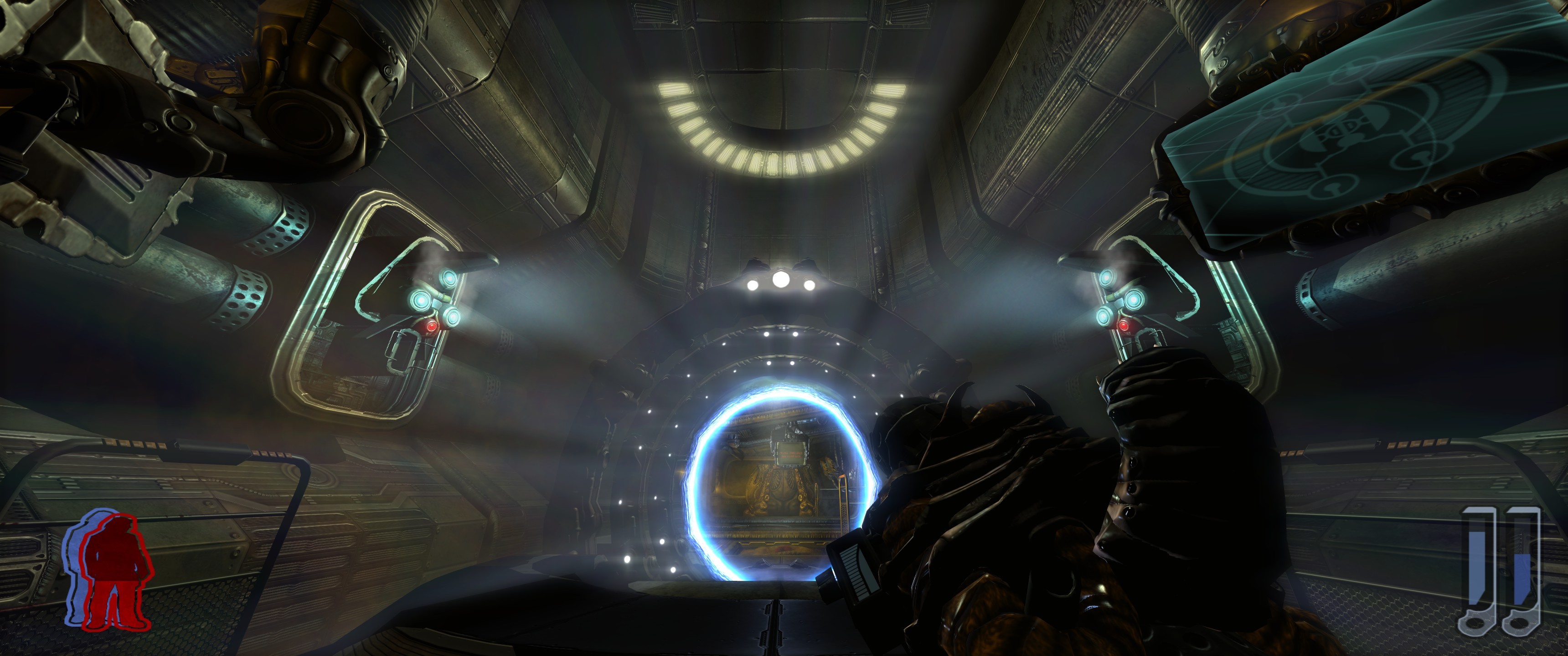
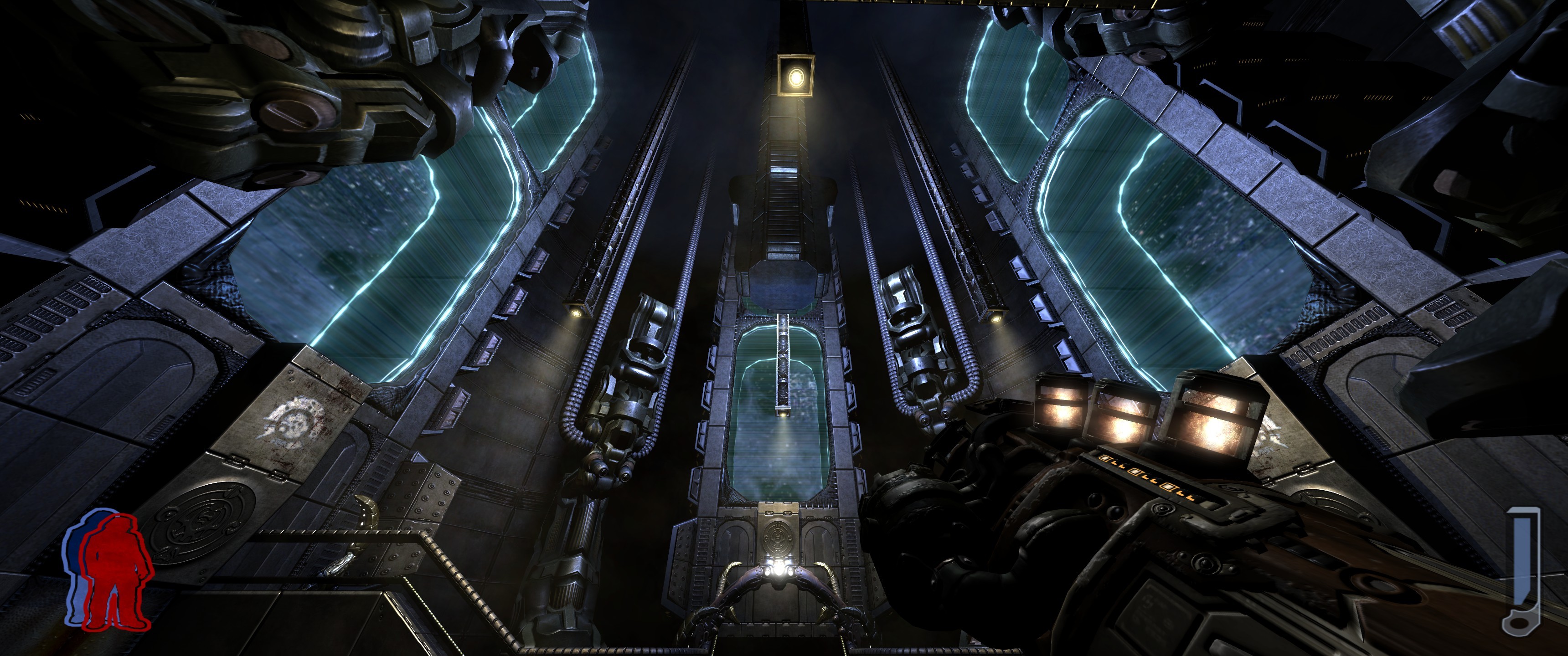
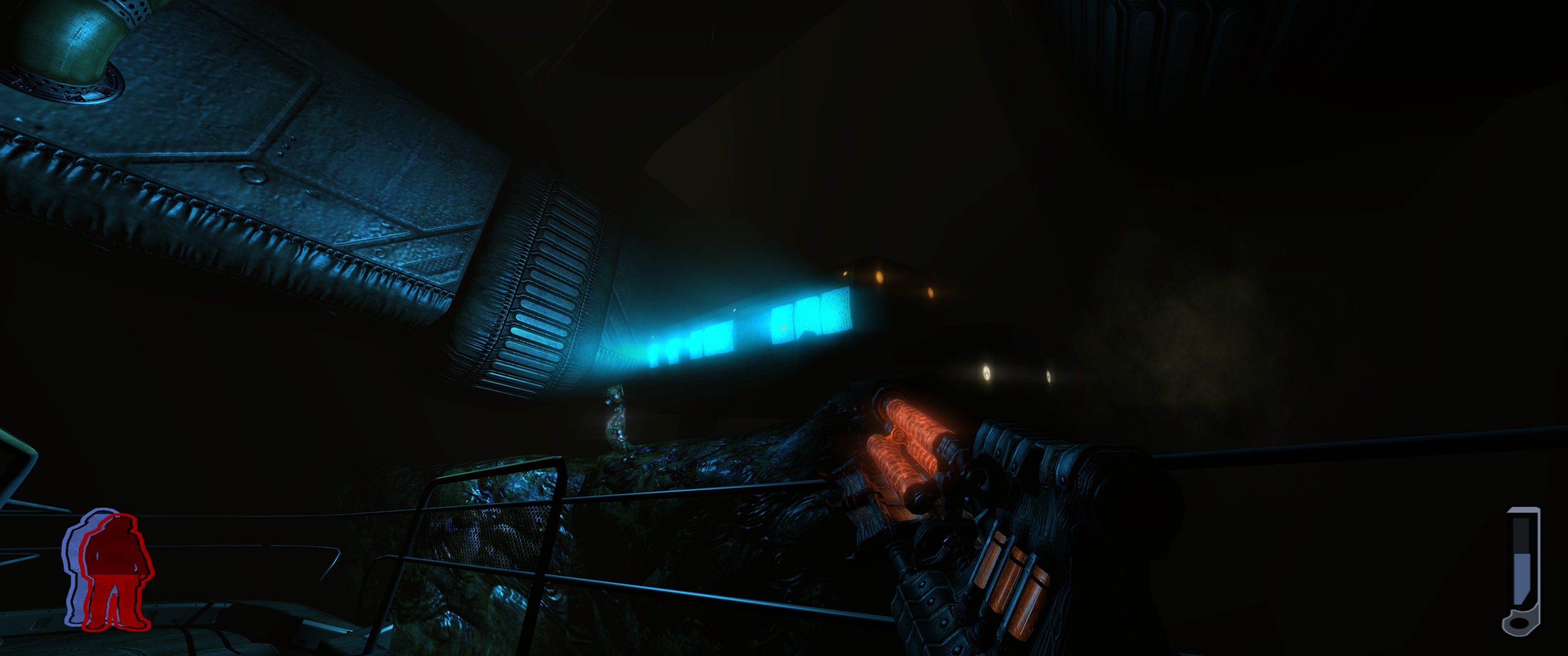
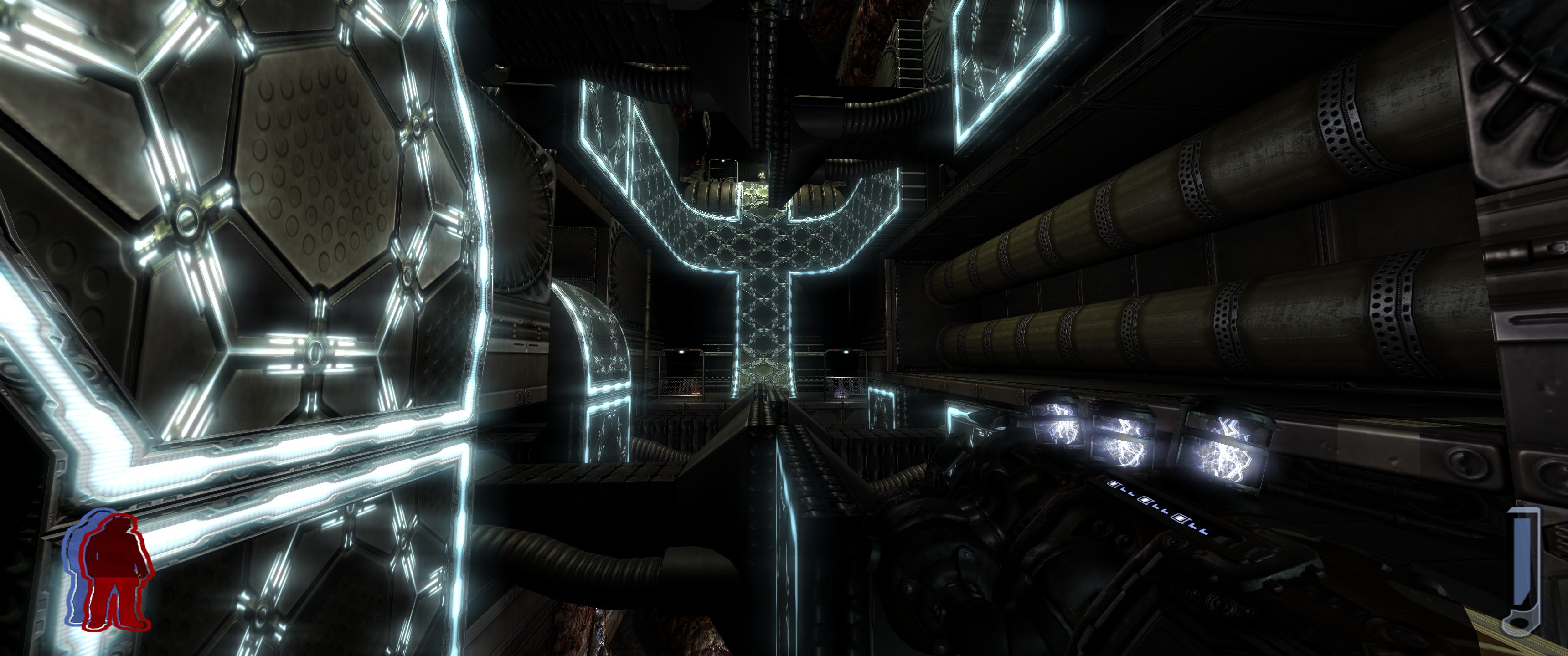
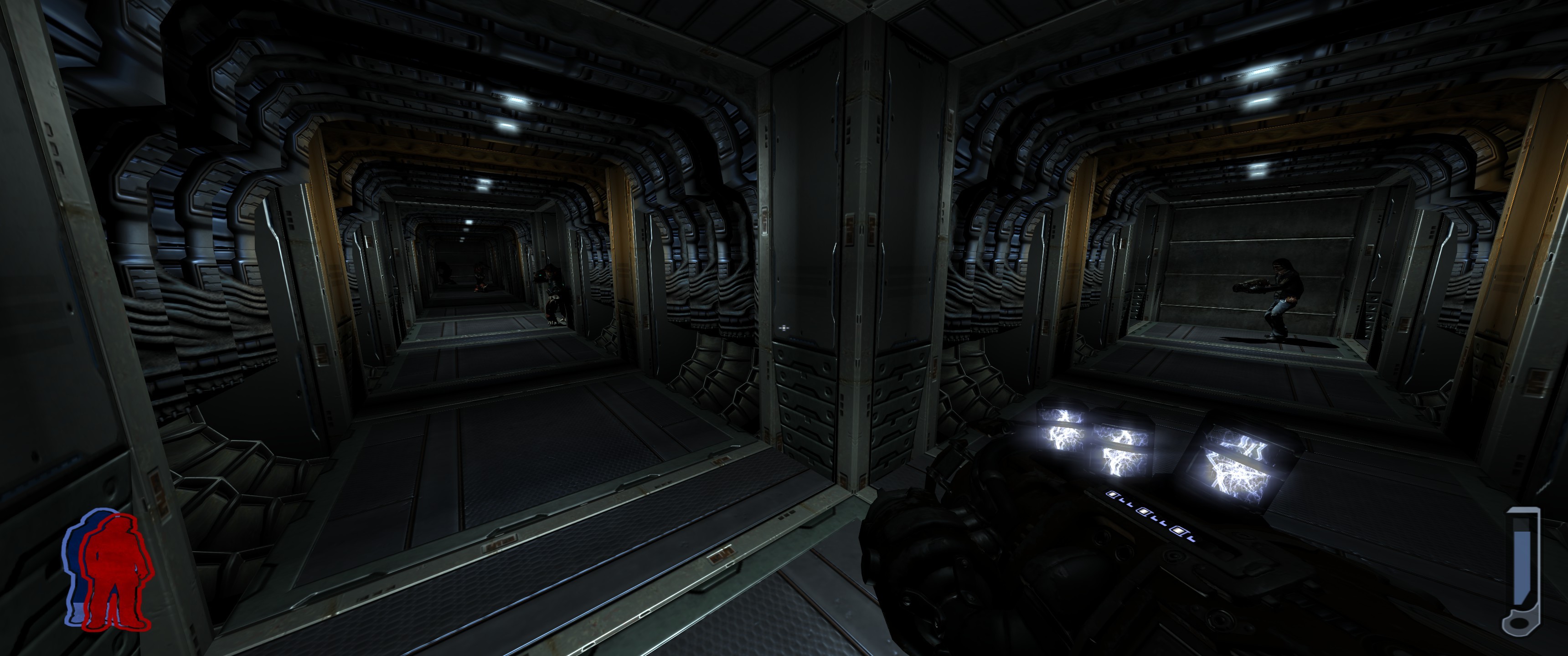
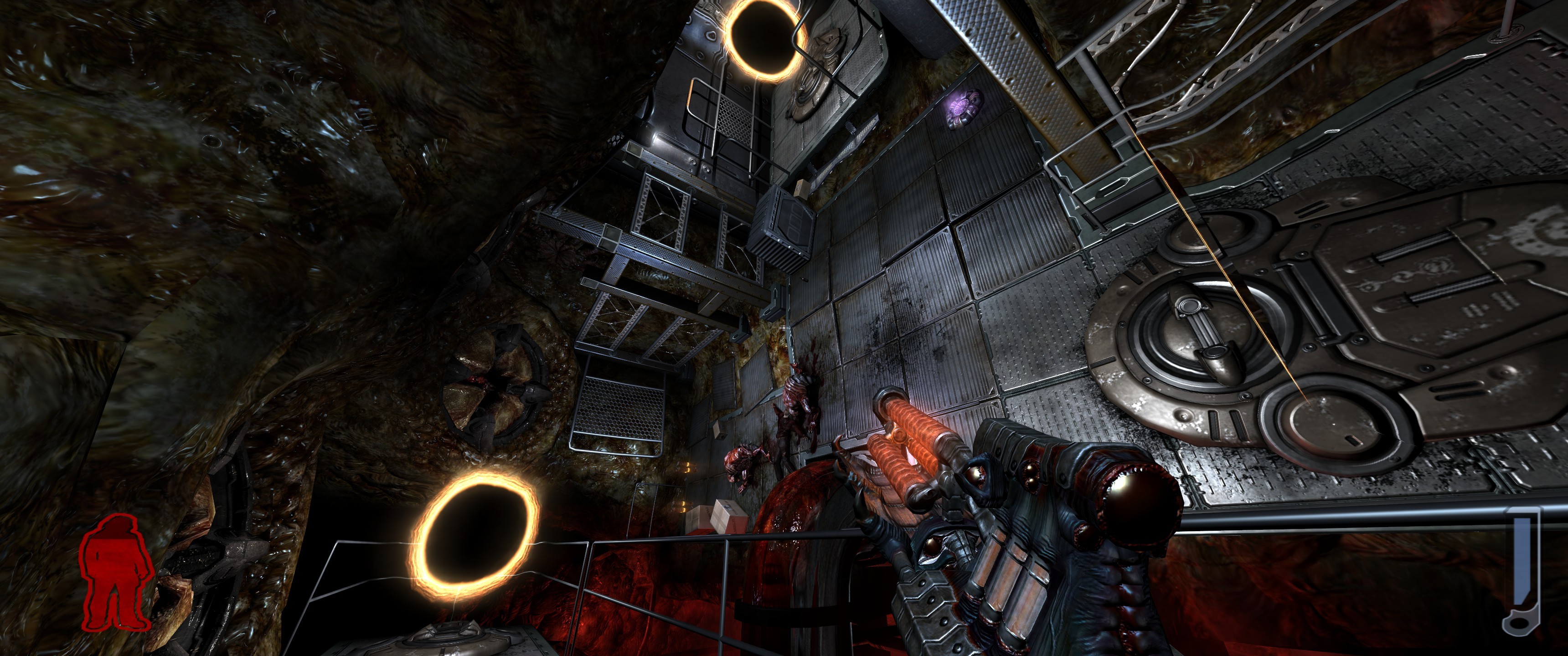
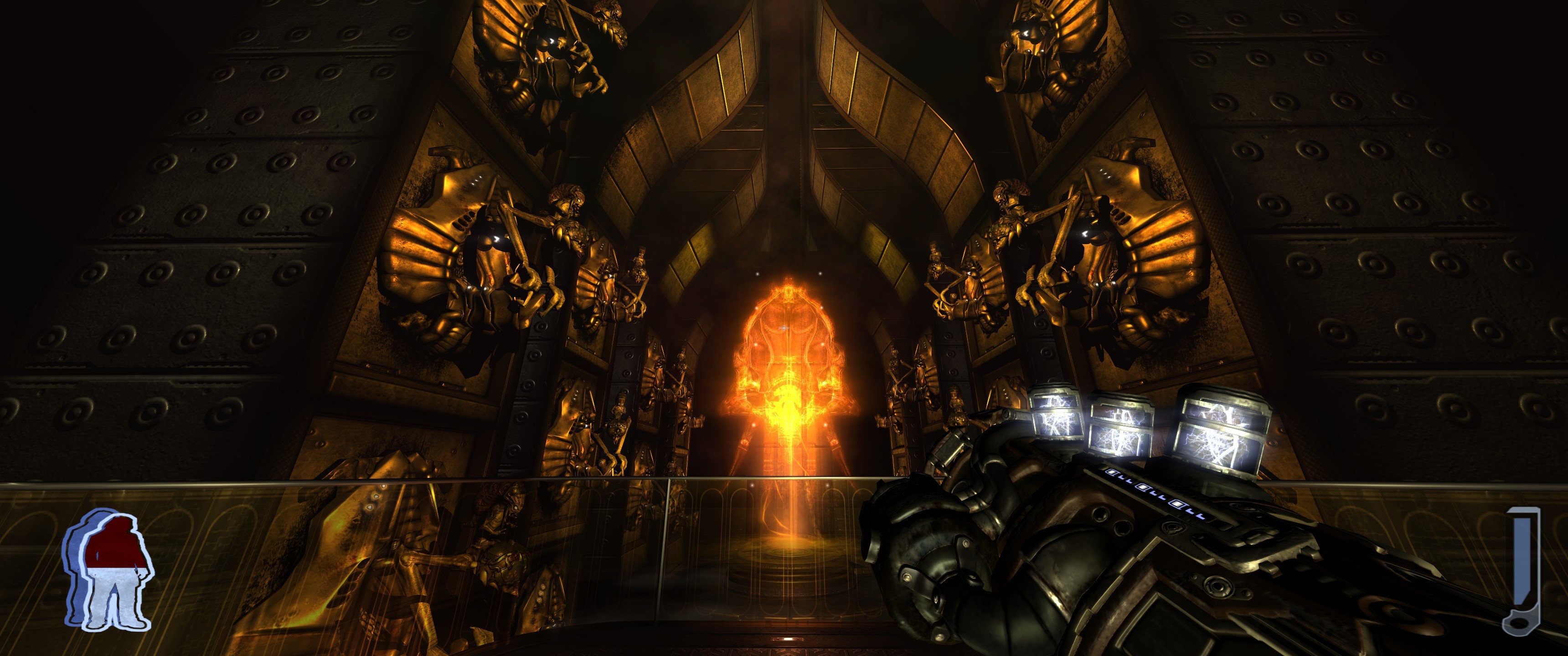
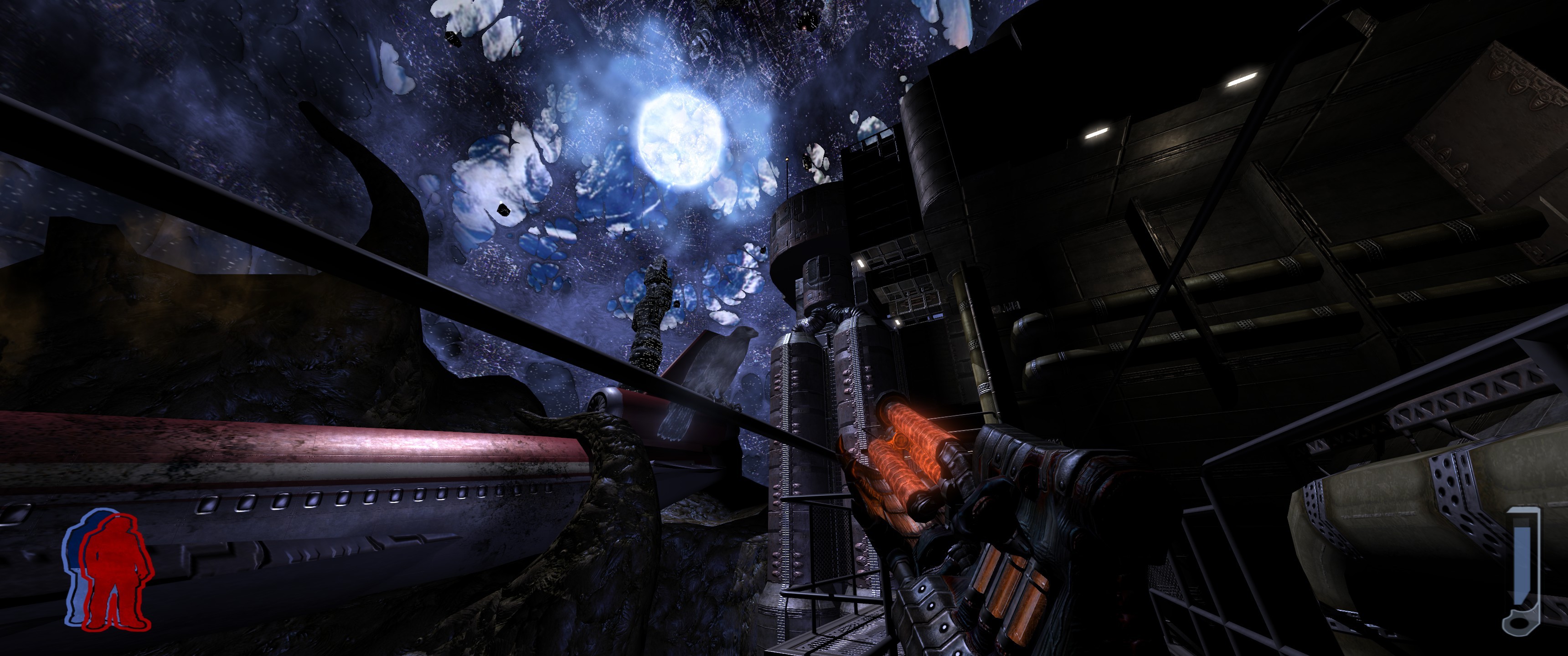
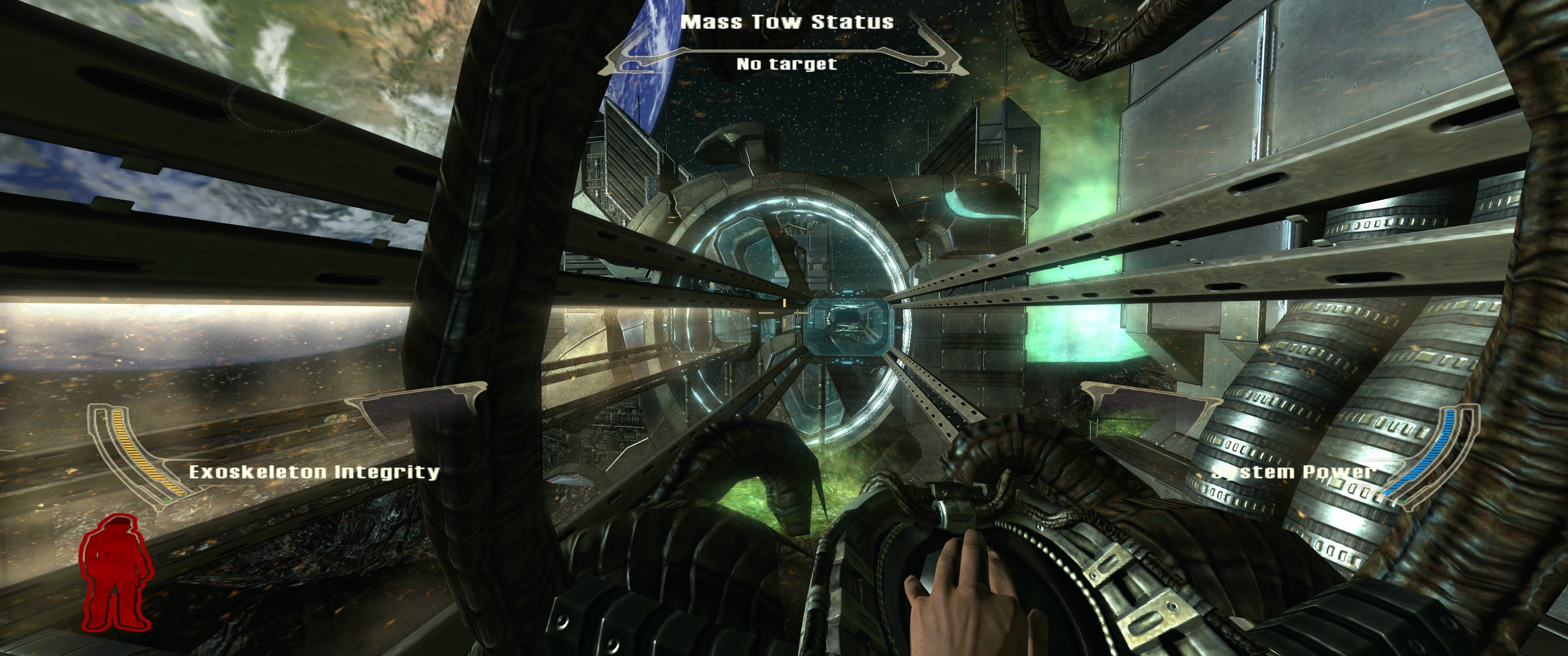


 (9 votes, average: 3.44 out of 5)
(9 votes, average: 3.44 out of 5)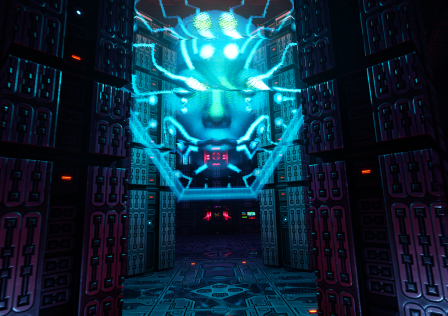

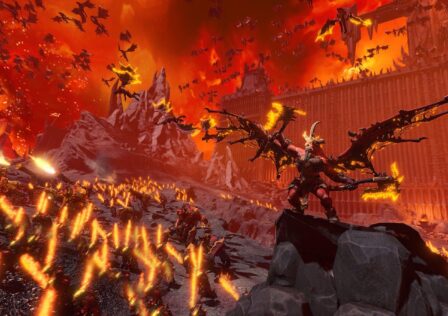

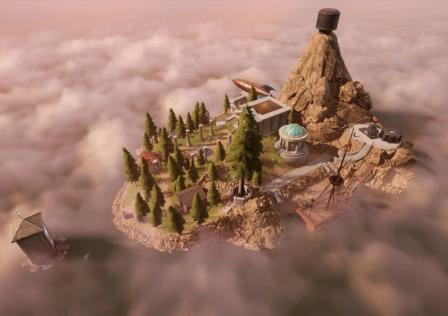
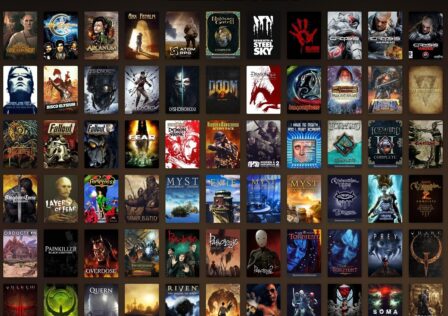



Your final paragraph is correct.